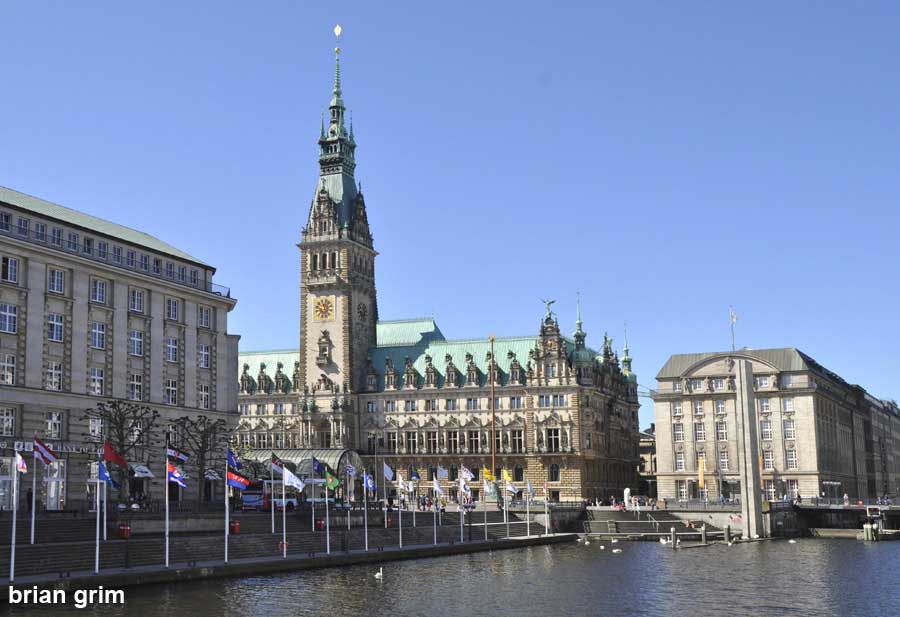
Hamburg City Hall
After the old town hall was destroyed in the fire of 1842, the city of Hamburg built the new town hall in 1897. After two architectural competitions were not realized due to political upheavals, an alliance of Hamburg architects, led by Martin Haller, took over the planning. A neo-renaissance building with a 112 m high tower was built. At the town hall tower you can see a phoenix under which there is a portrait of the old town hall destroyed in the fire. The magnificent facade is 111 meters long and is adorned by numerous figures. German emperors, professions and the patron saints of Hamburg's churches are depicted. The town hall houses the citizens and the senate of the city of Hamburg. The inner courtyard with the Hygieia fountain is also worth seeing. The fountain is dedicated to the goddess of purity hygiene, as around 8,500 inhabitants fell victim to the cholera epidemic of 1892.
The magnificent interiors and stairwells can be visited on a tour of the town hall. Dates and prices see link.
www.hamburg.de/rathausfuehrung/
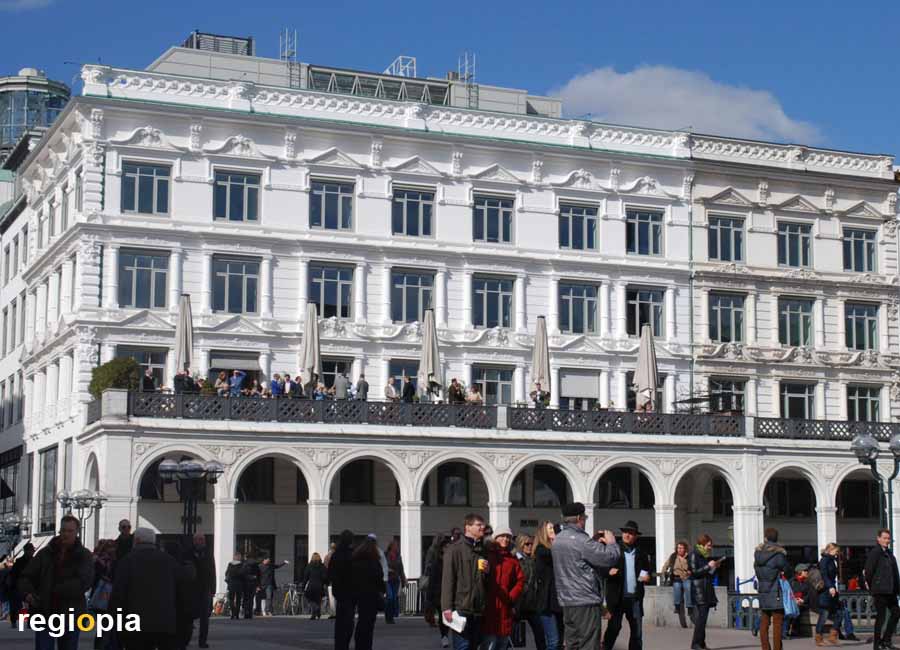
Alster Arcades
The luxury shopping arcade with the characteristic arches on the Alster was designed by Alexis de Chateauneuf in 1843. As with the town hall, the previous buildings fell victim to the great fire of 1842. The Alster Arcades are located on the small Alster, a canal between the Binnenalster and the Elbe. At the same time, they form the north-western end of the Rathausmarkt square. The Hamburg architect Chateauneuf was inspired by a trip to Italy. The arcades of Bologna and the town hall of Sienna (Alte Post) have been reinterpreted in Hamburg in a modified form. You can stroll elegantly under the Alster arcades or sit in one of the cafes and enjoy the view of the town hall.
Hamburg's first shopping mall was built between the Alster Arcades and the street Neuer Wall. The Mellin-Passage was opened in 1864 and is worth seeing because of the beautiful Art Nouveau paintings.
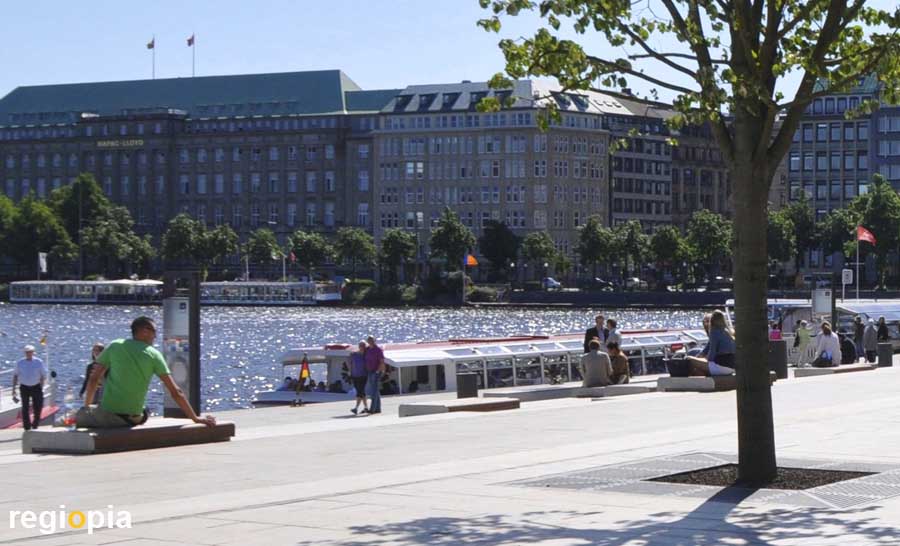
Jungfernstieg
The Jungfernstieg is one of the most beautiful places in Hamburg, especially when the sun is shining. The tree-lined square approaches the Binnenalster in broad steps. The Alster boat tours leave from the jetty at the Jungfernstieg. In the cafes you sit very relaxed with a view over the lake. In the past, unmarried ladies (Jungfern) strolled here with their parents, which is why the promenade has its unusual name with the meaning "Virgins Promenade".
The Jungfernstieg was built in 1235 as a dam to impound the Alster. After the great fire of 1842, the houses on Jungfernstieg were rebuilt. Magnificent banks, department stores and hotels emerged, making the Jungfernstieg the finest address in Hamburg.
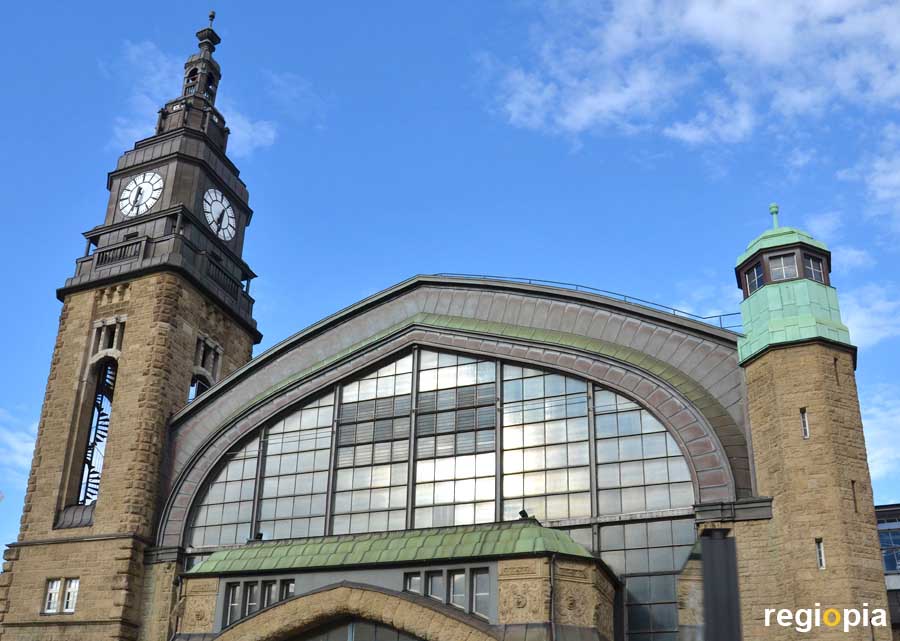
Hamburg Central Station
With 500,000 travelers per day (including U + S-Bahn), Hamburg Central Station is the busiest train station in Germany. The through station with 12 tracks was opened in 1906. The station building was designed by the Berlin architects Heinrich Reinhardt and Georg Süßenguth. The station concourse is around 150 m long, 115 m wide and 37 m high. The city fortifications used to be where the tracks extend today. The main train station is located between the city center and the St. Georg district.
From Hamburg Hauptbahnhof you can get to Berlin in around 1:40 hours, Frankfurt in 3:40, Cologne in 4:00 and Copenhagen in 4:40.
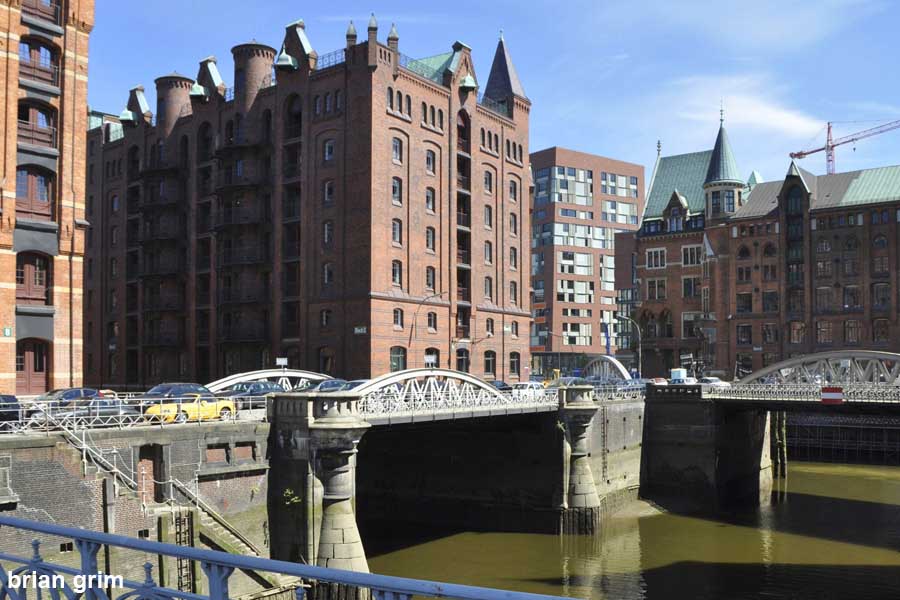
Speicherstadt
By the connection of Hamburg to the German Reich in 1881, the city of Hamburg was integrated into the customs territory of the Germany and the port was separated from the city as a duty-free area. In order to build the Hamburg free port, two residential areas were demolished. Hamburg received 40 million gold marks from Germany as compensation. With this money, the warehouses of the "Speicherstadt" (City of Warehouses) was built in 1888. In 2003 the Speicherstadt was removed from the free trade zone because the freight transport shifted to containers and the Speicherstadt had lost its port function. The red brick buildings have been a UNESCO World Heritage Site since 2015. If you want to experience one of the warehouses from the inside, you should visit the Speicherstadtmuseum.
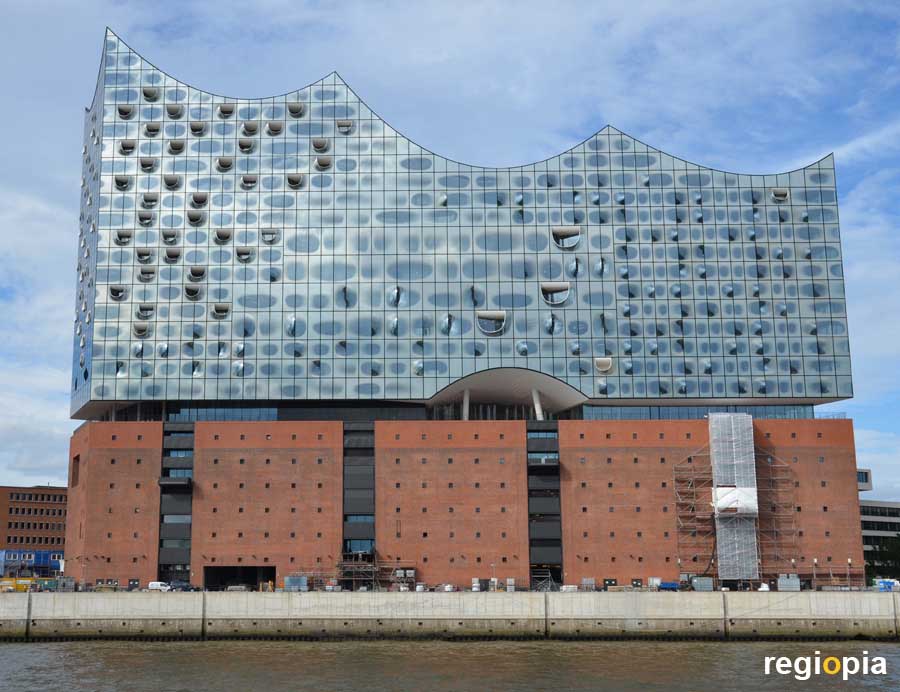
Elbphilharmonie
The "Elbphilharmonie" is Hamburg's new landmark, even if the exploded building costs had brought the project into disrepute. After almost 10 years of construction, the building was finally opened in 2016. In addition to 3 concert halls, there is a hotel, restaurants and 45 condominiums in the building with the strikingly curved silhouette. The Elbphilharmonie is very popular with tourists because there is a viewing platform in the joint between the old warehouse and the glass top. The remarkable building was designed by the Swiss architects Herzog & de Meuron.
ads
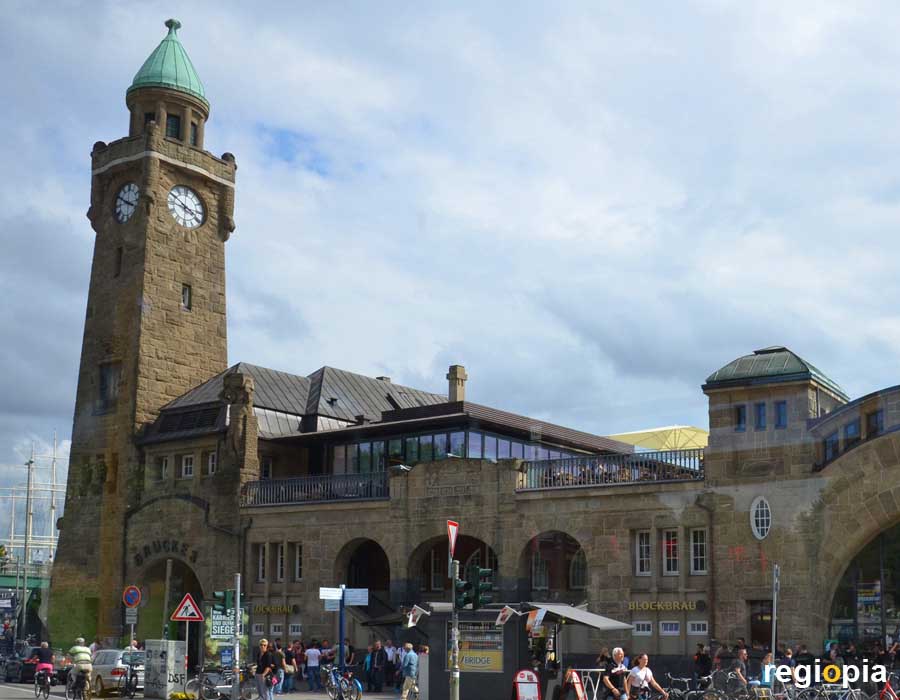
Landungsbrücken
The Landungsbrücken (jetty) in St. Pauli are one of the most famous sights of Hamburg. In the past, the big ships to America left here, today you can start a harbor cruise from the jetty or take the ferries along the Elbe. The Landungsbrücken are also a promenade with shops, restaurants and beer gardens. The museum ship Rickmer Rickmers is also at the pier.
The landmark of the Landungsbrücken is the level tower (photo), which was built together with the terminal building in 1909. On the water side, the tower shows the level of the Elbe just below the clock. The building complex was designed by the architects Raabe & Wöhlecke and shows some Art Nouveau details. The entrance to the Old Elbe Tunnel is to the west of the terminal building.
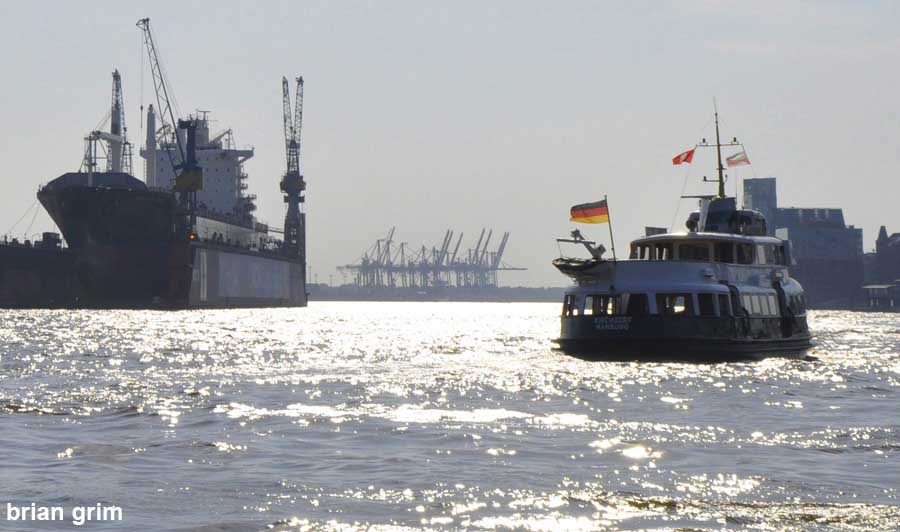
Hamburg Harbour
The Port of Hamburg is the largest port in Germany and the third largest in Europe only Rotterdam and Antwerp are bigger. The problem with the Port of Hamburg is the ever-growing container ships that can only navigate the Elbe towards Hamburg at high tide. In order to keep the port competitive, the Elbe has to be dredged deeper and deeper. The port of Hamburg was opened on May 7, 1189. The port birthday is celebrated every year on May 7th with a big party. Hundreds of ships form a spectacular maritime parade.
If you are coming to Hamburg for the first time, you should definitely take a harbor tour. It is very impressive to see the huge vessels up close. The "Great Harbor Tour" takes about an hour. The ticket counters of the various providers are located at the Landungsbrücken and the Überseebrücke. For current prices and departure times check the links below.
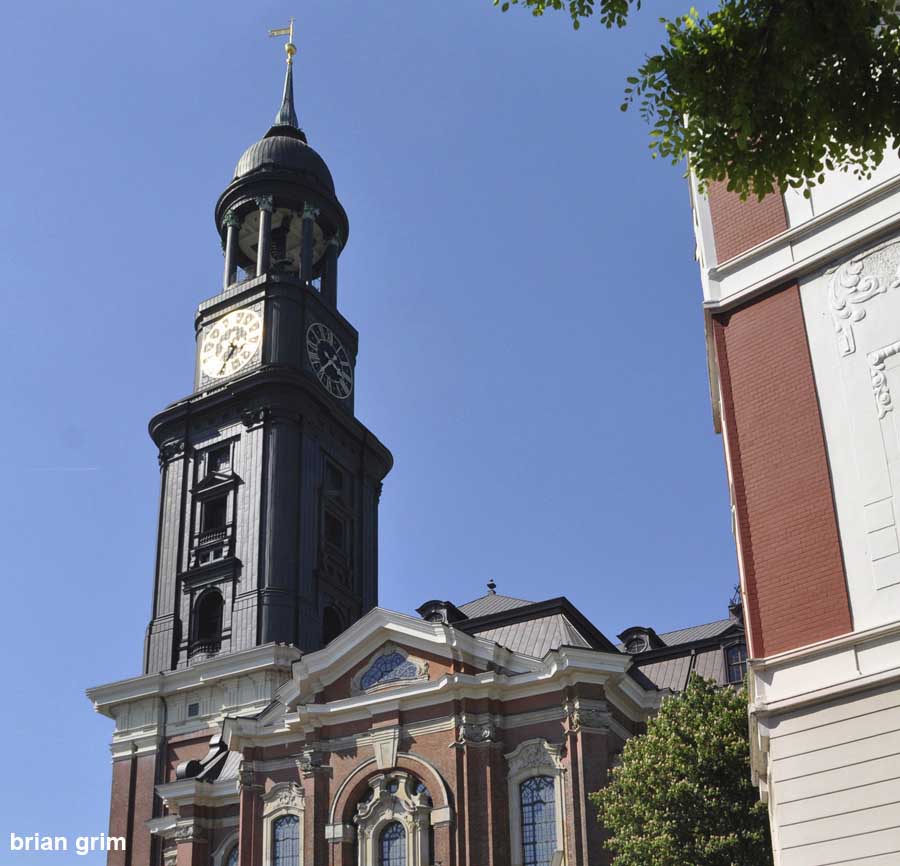
St. Michaelis
The origins of the evangelical church St. Michaelis go back to the year 1649, when the construction work for the first building on the site began. This church was destroyed by lightning in 1750. A second church was built, which was destroyed by a fire in 1906. This building was rebuilt until 1912 when it was destroyed again by british and american bombs in 1944. The rebuilding of St. Michaelis was completed in 1952. The tower of St. Michaelis is a landmark of Hamburg and simply called "Michel".
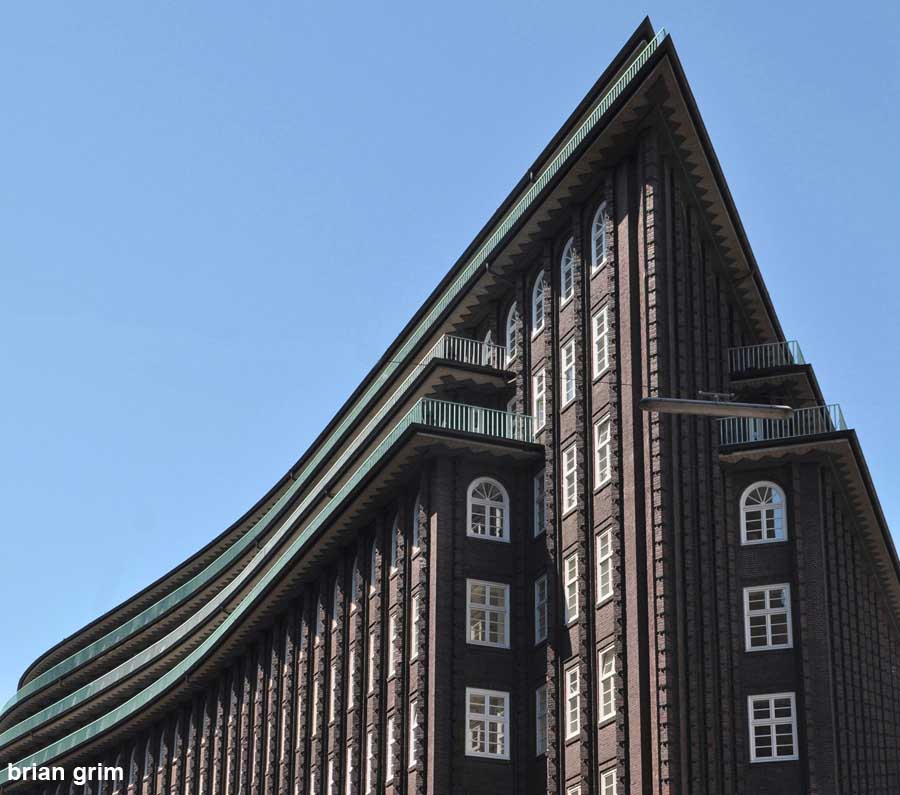
Chilehaus
The Hamburg merchant Slomann became rich in Chile and commissioned the architect Fritz Höger to design the Chilehaus in 1924. Its eye-catching, pointed shape quickly made it a Hamburg landmark. The expressionist style became the trademark of Fritz Höger, who also designed famous buildings in other cities, such as the Anzeiger Hochhaus in Hanover. The Chilehaus and the Speicherstadt are part of the UNESCO World Heritage.
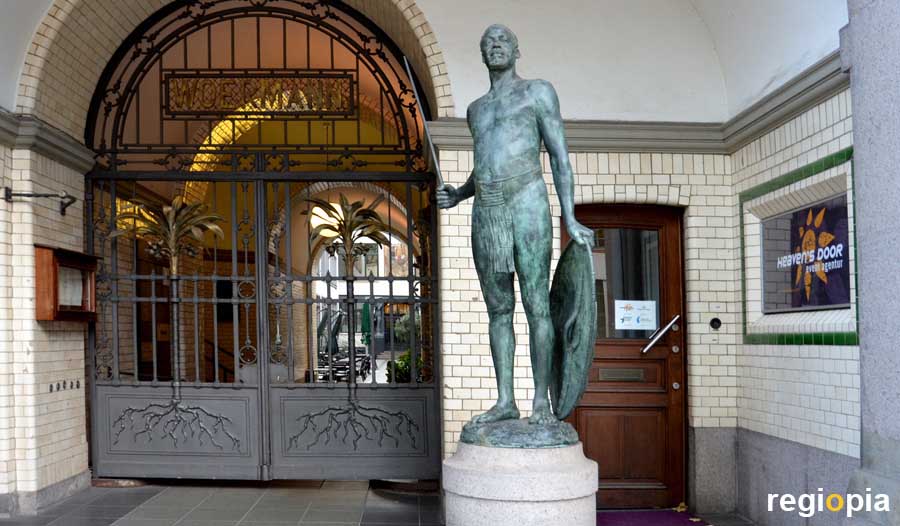
Africa House
The Woermann shipping company had the Afrikahaus built in 1899. Woermann made a fortune with trade with the German colonies in Africa of Togo, Cameroon, Namibia and Tanzania. The office building in the colors of the shipping company was designed by the architect Martin Haller. The two elephant sculptures by Carl Börner in the inner courtyard and the warrior by Walter Sintenis in front of the entrance are worth seeing. Other African motifs decorate the Africa House. The German colonial history of Namibia has been viewed very critically since the Herero uprising in 1908. After the First World War in 1918, Germany lost all of its colonies.
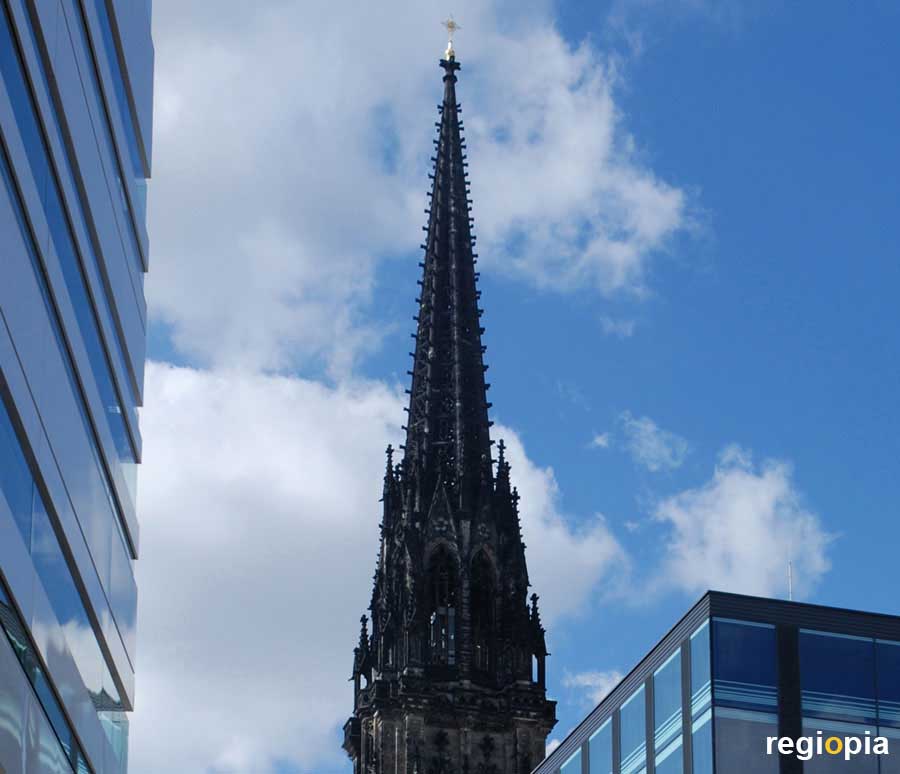
St. Nikolai
The church St. Nikolai (Nikolaikirche) was destroyed in 1944, only the 147 m high church tower survived the bombing war. The previous building burned down in the Great Fire in 1842. In 1863 St. Nikolai was rebuilt in neo-Gothic style and exceeded the height of the Strasbourg Cathedral, which was by then the tallest building in the world. Today there is a memorial for the victims of war and persecution in the soot-black tower.
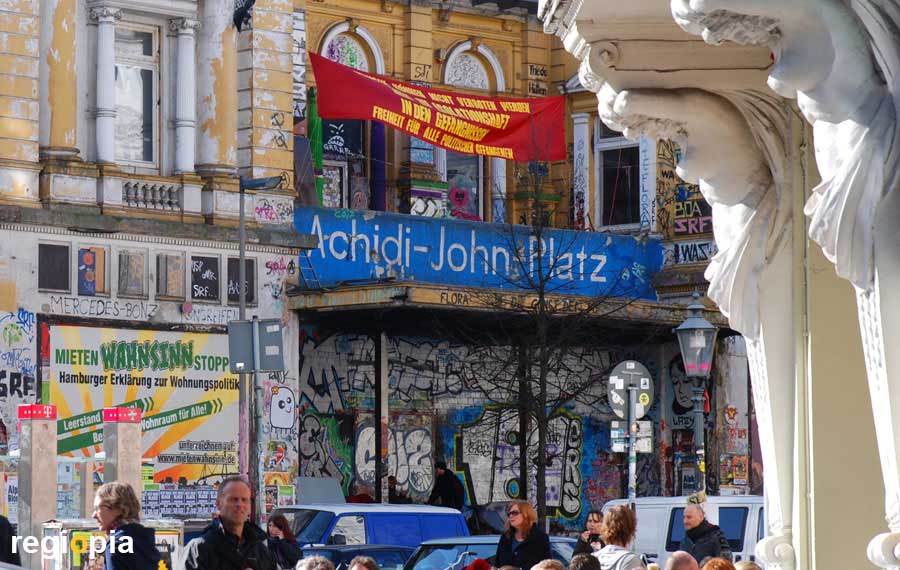
Schanzenviertel
The trendy district of the Hanseatic city of Hamburg repeatedly lands in the headlines due to riots and evictions of occupied houses. The name "Schanzenviertel" is derived from the former defense system "Sternschanze". The district is located south of the Sternschanze / Messe S-Bahn station. The center of the Schanzenviertel is at the intersection of Schulterblatt and Juliusstraße. (See location marker) Here you can also find the Rote Flora, a former theater that became a symbol for the resistance against capitalism. Some investors have already failed at this building. Many fancy fashion shops, bars and restaurants make the Schanzenviertel an urban neighborhood of the left scene.
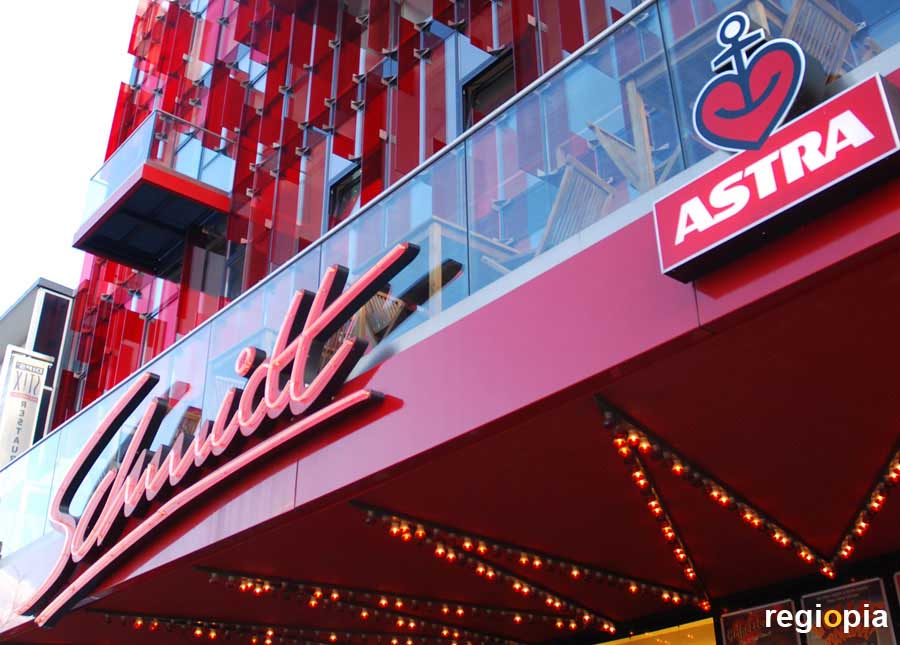
St Pauli
Sankt Pauli is probably the most famous quarter of Hamburg. The legendary Reeperbahn is located here. The name comes from the rope makers who needed a long, straight track to lay out the ropes. The former harbor district is famous for prostitution and wild parties. Night clubs, sex shops and strip bars can be found on street Große Freiheit. On Herbertstraße there are brothels with shop windows like in Amsterdam. However, Herbertstraße is protected from prying eyes by a privacy screen and entry is only permitted for men over 18 years of age. There are also several theaters on the Reeperbahn. The red light district between Millerntor and Nobistor describes itself with pride as "The most sinful mile in the world". St. Pauli and the Reeperbahn are among the most famous attractions in Hamburg.
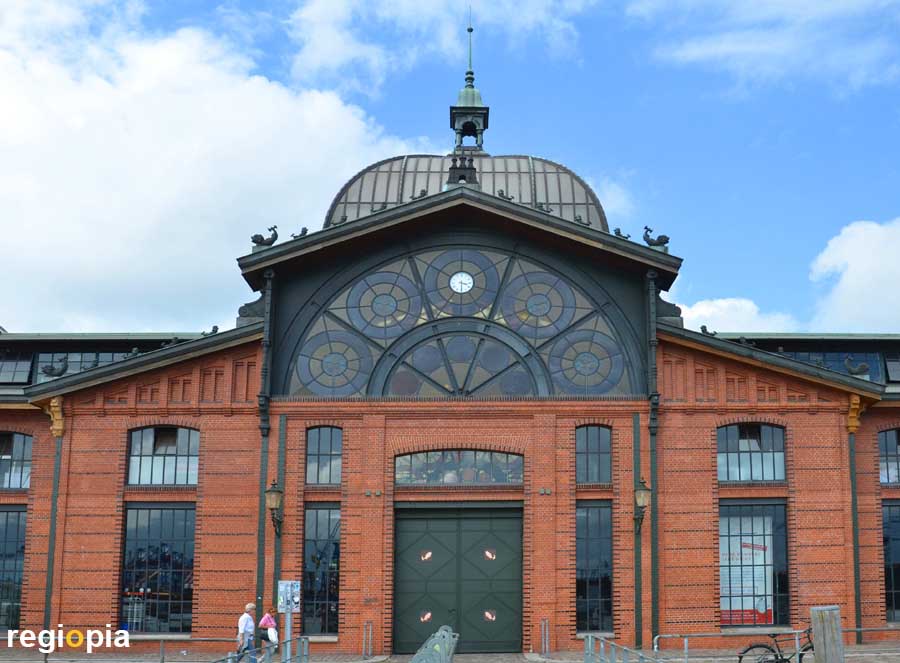
Hamburg Fishmarket
The Hamburg fish market is not far from the Reeperbahn. The Altona fish auction hall was opened by Kaiser Wilhelm II in 1896. The red brick building with a clear roof made of iron and glass was rebuilt in 1985 and has served as a fish market and event hall ever since. The fish market is opens every Sunday between 5 a.m. and 9:30 a.m. Some guests have just come out of the pub in St. Pauli and get a fresh fish sandwich on their way home. Other goods are also for sale in the market, it is more of a happening than a normal fish market. Some fishmongers have made it to local celebrity with their cheeky sayings.
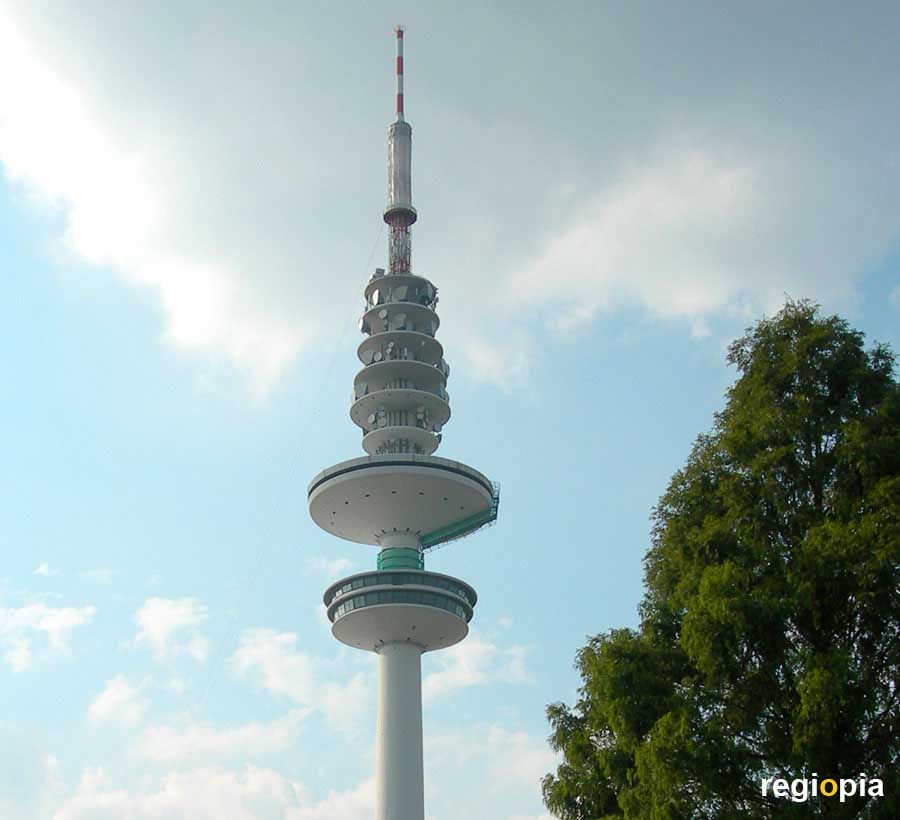
Heinrich-Hertz-Turm
The Hamburg television tower was opened in 1968 and is 292 m tall. The design comes from the architects Trautwein, Schlaich and Behn. Even if the Hamburg TV tower is not the highest tower in Germany, it is the most elegant and, for me, the most beautiful in the country. It was named after the Hamburg physicist Heinrich Hertz, who researched electromagnetic waves. The viewing platform has been closed since 2001, but there are plans to reopening the tower for visitors.
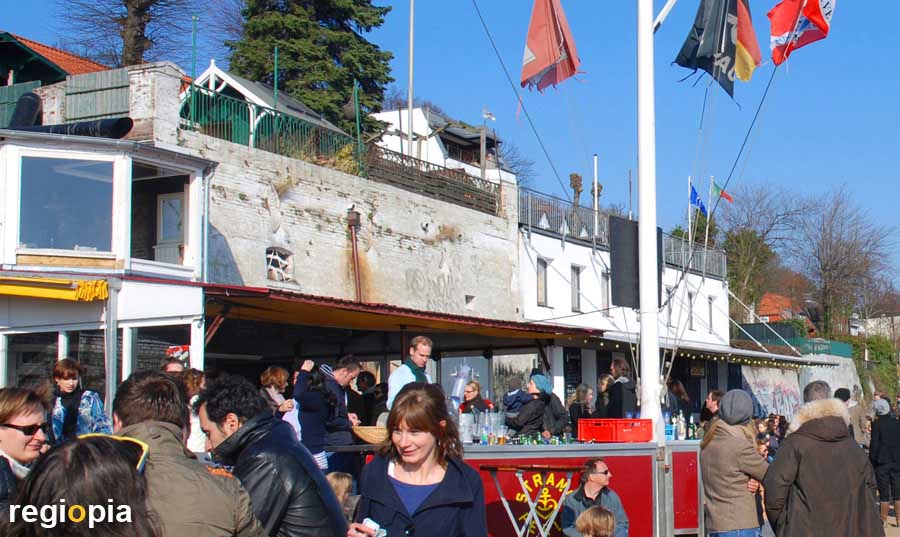
Strandperle
The Övelgönne beach between Othmarschen and Ottensen is one of the most beautiful places in Hamburg. The "Strandperle" (beach pearl) is the perfect place on a sunny day. The small cafe magically attracts visitors. In front of the Strandperle is the longest and widest sandy beach in Hamburg at the river Elbe. To the south you can see the glittering Elbe with the container port in the background. This is the only place in Hamburg where you have the feeling of being by the sea. The mouth of the Elbe into the North Sea is only 80 kilometers away.
The easiest way to get to the Strandperle on the Elbe beach is by taking the HADAG line 62 ferry to Finkenwerder. You get off at the museum harbor Oevelgönne and walk about 600 m to the beach.
Map sights Hamburg
ads
Hamburg Germany
Welcome to Hamburg
The Hanseatic city of Hamburg is famous for the largest port of Germany. Even if the city is about 80 km away from the sea, you have the feeling you could smell it. Seagulls, big ships and the wide river create the atmosphere of the city.
With around 1.8 million inhabitants, Hamburg is the second largest city in Germany. The international flair of Hamburg attracts many visitors. Hamburg has developed into a musical capital in recent years and is constantly presenting new productions.
ads
Harbour Cruise
If you are coming to Hamburg for the first time, you should take a harbor tour. There are many providers who loudly advertise their harbor tours. If you want to save some money, you can take the HVV ferries from the Elbphilharmonie in Hafencity to Finkenwerder. With a day ticket you can use local transport and ferries.
More information at: www.hvv.de
Hamburg neighborhoods
Hamburg is known for Sankt Pauli with the Reeperbahn, Herbertstraße and many night clubs. St. Pauli is also a "party zone" for night owls. The "Schanzenviertel" is a bit cooler, with trendy cafes and designer shops. Ottensen and Eppendorf are also beautiful districts. In Roterbaum, Harvestehude, Othmarschen and Blakenese there are stately villas and city palaces belonging to the wealthy upper class.
ads
Discover Hamburg
In addition to the many sights to be discovered in the Hanseatic city, Hamburg also offers a high quality of leisure time with beautiful gardens and water areas, such as the Planten un Blomen or the beautiful Outer Alster.
Arts and Culture
In bad weather, you can pass the time in the city's numerous museums. The Deichtorhallen, the Hamburger Kunsthalle or the Maritime Museum are highly recommended.
Architecture
Those interested in architecture can take a tour of the "HafenCity". Many well-known architects from Germany and abroad have erected interesting buildings in recent years. The best known include Herzog & de Meuron from Switzerland, David Chipperfield from Great Britain and Behnisch Architects from Stuttgart.


